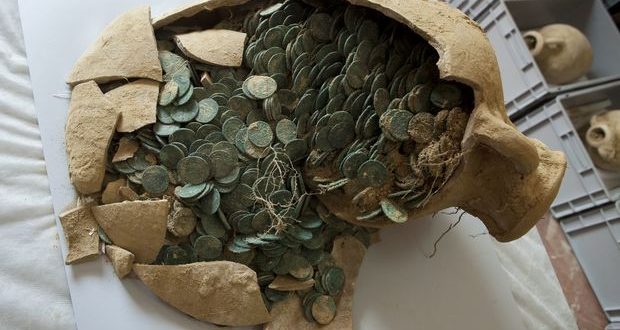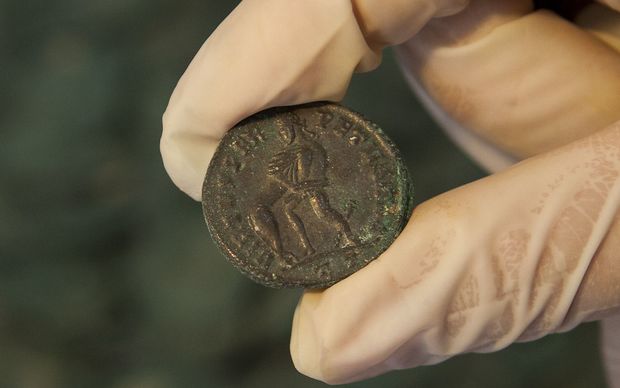Workers laying pipes in a park in southern Spain have unearthed a 600-kilogram trove of Roman coins in what culture officials say is a unique historic discovery.
Scientists said that they had never before seen a hoard of coins this large before. According to Ana Navarro, the head of Seville’s Archeology Museum, the coins are worth “certainly several million euros.”
Currently, the number of coins are unknown, but it’s bound to be astronomical—a trove of more than 4,000 bronze and silver coins found in Switzerland in November 2015 weighed a mere 33 pounds (15 kg), according to the BBC.
The coins date to around the third and fourth centuries CE, according to Spanish newspaper El País. This date derives from the Roman emperors found on the coins: Some feature the image of Maximian, who was an on-again, off-again emperor between 285 and 310, while others feature Constantine, who ruled from 306 to 337.
The backsides of the coins, meanwhile, apparently depict allegories, including abundance.
The coins were hidden away inside 19 amphorae—a type of pottery storage container that was used by both ancient Greeks and Romans to store and transport wine, food, oils, perfumes, and the like. The amphorae in this case were smaller than the ones used to transport wine and appear to have been specially designed to hold money, according to The Local.
The amphorae were then “deliberately concealed underground and covered with a few bricks and ceramic filler,” according to sources at the Andalusian department of culture.
Further, the coins, having likely been minted in the East, were apparently uncirculated, granted by the lack of wear and tear on them.
“It is a unique collection and there are very few similar cases. The majority were newly minted and some of them probably were bathed in silver, not just bronze,” Navarro told reporters. “I could not give you an economic value, because the value they really have is historical and you can’t calculate that.”
Which means that these counts aren’t just bountiful, they’re marvelously preserved. Researchers believe the coins were intended to be used to pay taxes or support Roman soldiers in Spain, although that is one of the many details yet to be confirmed.
“We have a team looking into the discovery right now. We believe it is hugely important and will have more information very soon,” a spokesman at Andalusia’s Ministry of Culture in Seville told The Local.
Agencies/Canadajournal
 Canada Journal – News of the World Articles and videos to bring you the biggest Canadian news stories from across the country every day
Canada Journal – News of the World Articles and videos to bring you the biggest Canadian news stories from across the country every day




